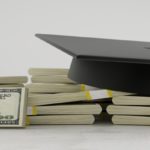According to the statistics found on educationdata.org, by the end of 2021, approximately 43 million Americans owed more than $1.62 trillion in total federal student loan debt. This equates to an average federal student loan balance of $37K per student and accounts for 93% of all student loan debt (including private loans).
Several existing programs lessen the burden of student loans but require decades of repayment. For example, the Public Service Loan Forgiveness (PSLF) program was created to provide relief and attract students into public service careers. It allows borrowers who make ten years (120 timely monthly payments) of loan payments to have the remaining outstanding balance forgiven.
Immediate Relief for Many Borrowers
For the past two years, student loan debtors enjoyed some relief as monthly payments were paused during the pandemic. In late August, the Biden Administration extended this hiatus on student loan payments until December 31, 2022.
In addition to the extended pause, on August 24, 2022, President Biden announced an executive order (unlike a legislative order that comes with debates from both houses of Congress) to forgive federal direct loans up to $10,000 for graduates with annual salaries below $125,000 for singles or $250,000 for married couples and heads of households. Income will be calculated as the borrower’s adjusted gross income (AGI) reflected on their 2020 or 2021 tax return. Biden will also cancel up to $20,000 for borrowers who meet the salary requirements and were Pell Grant recipients in college.
Students still in school are eligible to have debt canceled, and the income cap will apply to their parent’s income. Parents who took out Parent PLUS loans are also eligible. For many borrowers, the debt cancellation will be automatic as their information is already on file. If information is not on file, the US Department of Education will launch a simple application which should be available by early October. It is advised that the application be filed by November 15th to receive relief.
Income-Driven Loan Forgiveness
The federal government has four main income-driven payment plans, enabling borrowers to cap loan payments at a percentage of monthly income.
- Pay As You Earn (PAYE)
- Revised Pay As You Earn (REPAYE)
- Income Based Repayment (IBR)
- Income Contingent Repayment (ICR)
If accepted into one of these programs, the remaining loan balance will be eligible for forgiveness after 20 (e.g., PAYE) or 25 years (e.g., ICR), depending on the plan. However, few borrowers have achieved loan forgiveness through these plans. Other plans include teacher loan forgiveness, state-sponsored repayment assistance programs, and military student loan forgiveness and assistance.
Understanding Public Service Loan Forgiveness
This plan is available to federal, state, local, and Tribal governments and qualifying nonprofit employees with federal student loans.
The government will forgive the remaining loan balances for eligible borrowers who complete 120 qualifying loan payments, i.e., ten years of work before being eligible for loan forgiveness.
How to Qualify for PSLF
- The Correct Loans that Can be Forgiven PSLF will only forgive eligible William D. Ford Federal Direct Loan (Direct Loan) loans. Private student loans do not qualify. Debtors can consolidate other federal student loans, such as Federal Family Education Loan loans or Perkins loans, to make them eligible for PSLF. A borrower who qualifies for a Perkins loan consolidation can request forgiveness after five years of public service. In that instance, the best option is to pursue that forgiveness and not consolidate the Perkins loans. The debtor can still participate in PSLF if they have other federal student loans.
- Full-time Work for a Qualifying Employer
- Government organizations on any level (including tribal)
- 501(c)(3) nonprofits
- AmeriCorps or the Peace Corps
- Nonprofit organizations without 501(c)(3) status but provide a qualifying public service as their primary mission.
- Religious organizations
- Hours that Must be Worked Weekly Borrowers must work for the qualifying employer full-time, at least 30 hours per week. If a debtor works part-time for two qualifying employers and the hours average at least 30 hours each week, they may still be eligible.
- Complete 10 Years’ Worth of Payments
Each borrower must make 120 monthly loan payments.
The payments must be made:
- For the entire amount that is due
- On time, i.e., within 15 days of the due date
- On or after October 1, 2007
- The payments must be made while the debtor is working full-time for a qualifying employer and on a qualifying repayment plan.
- Payments will not count if they are made if the student is still in school, in deferment or forbearance, during a grace period.
A Temporary Change Has Made a Permanent Difference for Many
Since its inception, the program suffered from being difficult to navigate for many borrowers, and the type of eligible loans was narrow.
In October 2021, temporary changes were made to the PSLF program to simplify the debt cancellation process for borrowers who have made ten years of on-time payments. A retroactive waiver broadened the types of loans that are eligible for forgiveness, and automatic certification of payments for federal employees and members of the military was introduced. In addition to having debts canceled, more than one million borrowers have used the waiver to receive additional credit toward forgiveness.
The temporary changes allow student borrowers to get credit for payments made on loans from the Federal Family Education Loan (FFEL) Program, Perkins Loan Program, and other federal student loans. These borrowers must apply to consolidate their loans into a Direct Consolidation Loan before the deadline of October 31 to qualify for the program under the temporary changes. Borrowers can also combine multiple sources of part-time employment to qualify, and months in service do not have to be consecutive.
The changes were necessary and overdue. Over its history up to October 2021, the program discharged debt for only 7,000 borrowers, according to the Department of Education. The temporary changes resulted in 175,000 borrowers having $10 billion in debt canceled in the last ten months. However, the waiver of qualifying payment rules ends on October 31, 2022.
Tax Implications
Under the American Rescue Plan Act (ARPA) of 2021, student loan amounts forgiven will not be considered taxable income for tax purposes. It should be noted that according to taxfoundation.org, there are seven states (including my own state of California) that may not follow the federal government and the forgiven amount may be subject to state income taxes
Final Steps
Once a borrower has fulfilled all the requirements of the PSLF program, it’s time to submit the Public Service Loan Forgiveness application. The applicant must be working full-time for a qualifying employer at the time of the application.
Along with the application, an employment certification form for the current employer and each employer during the 120 payments must be submitted. If the applicant has been completing these forms each year, only the current employer’s certification must be included. FedLoan Servicing will notify the applicant once it receives its paperwork. The applicant does not have to pay the monthly loan bill while FedLoan Servicing processes the application.
The Bottom Line
For borrowers with lower balances, the $10,000 or $20,000 student loan forgiveness program will mean an immediate, tangible difference in income and standard of living. Don’t hesitate to reach out to your local financial planner to find out how this news impacts your budget moving forward.







